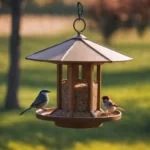In the quest for natural remedies to control pests, many turn to traditional solutions passed down through generations. Among these, cedar wood has garnered attention for its potential as a natural insect repellent. This article examines the properties of cedar that may make it effective against bugs and explores its use in various forms for pest control.
Cedar: Properties and Historical Use
Cedar wood, derived from various types of coniferous trees, is renowned for its pleasant aroma and durability. Historically, cedar has been used in different cultures for its insect-repelling properties, particularly in storing clothing and linens to ward off moths. The wood’s natural oils are believed to emit scents and compounds that are unappealing to certain insects. This historical use has laid the foundation for cedar’s modern-day applications in bug control.
How Cedar Works as a Repellent
The repellent properties of cedar are attributed to its natural oils and compounds, including thujone, which is thought to be distasteful or even toxic to certain insects. These aromatic compounds evaporate slowly over time, releasing a scent that is pleasant to humans but acts as a deterrent to many bugs. The effectiveness of cedar as a repellent is not just limited to its smell; it also involves the chemical composition of the wood, which interferes with the sensory receptors of various insects, making it an inhospitable environment for them.
Types of Bugs Repelled by Cedar
Cedar is particularly effective against a range of common household pests. One of the most well-known is the moth, specifically the larvae of clothes moths, which are deterred by the scent of cedar. Cedar has also been reported to repel other insects such as cockroaches, termites, and certain types of ants. Additionally, cedar chips are often used in gardening to keep away pests like slugs and snails. However, it’s important to note that the effectiveness of cedar can vary depending on the species of insect and the concentration of the repelling compounds.
Using Cedar for Bug Control
Cedar can be utilized in various forms for pest control. Cedar oil, extracted from the wood, is used in sprays and diffusers as an insect repellent. Cedar chips and shavings are commonly placed in gardens, closets, or storage boxes to deter pests. Cedar balls and blocks are popular for use in wardrobes and drawers to protect clothing from moths. For outdoor use, cedar mulch is used in gardens not only for its insect-repelling properties but also for its aesthetic appeal and soil conditioning benefits. When using cedar products, it’s essential to ensure they are fresh and have not lost their aromatic oils, as their effectiveness diminishes over time.
Scientific Studies and Evidence
Research into the efficacy of cedar as an insect repellent has produced mixed results. Some studies have supported the traditional use of cedar in repelling certain insects, particularly moths, while others suggest that its effectiveness may be limited or temporary. These variations in findings can be attributed to factors such as the concentration of cedar oil, the type of cedar used, and the specific species of insects being repelled. Scientific inquiry into this area continues, as understanding the specific conditions under which cedar is most effective can be valuable for natural pest control strategies.
Limitations and Considerations
While cedar is a popular natural repellent, it’s important to recognize its limitations. One of the primary considerations is that the effectiveness of cedar can diminish over time as the essential oils evaporate. This means that cedar products may need to be replaced or refreshed periodically to maintain their repellent properties. Additionally, not all insects are equally deterred by cedar; some pests may not be bothered by it at all. There’s also a consideration for individuals with sensitivities or allergies to cedar’s strong aroma. In such cases, alternative pest control methods may be more appropriate.
Alternative Natural Repellents
For those seeking other natural remedies for pest control, options such as lavender, peppermint oil, and eucalyptus can be effective against certain bugs. Like cedar, these natural substances work by emitting scents that are unpleasant to insects. Integrating these alternatives with cedar or using them in areas where cedar is less effective can provide a more comprehensive approach to natural pest management.
Conclusion
Cedar is a valuable natural tool in the fight against certain household pests, particularly moths, thanks to its aromatic oils. While it can be an effective and environmentally friendly option, understanding its limitations and the need for regular maintenance is crucial for optimal use. As part of an integrated pest management strategy, cedar can play a significant role in keeping homes and gardens free from unwanted insects. The continued exploration of natural repellents like cedar contributes to a sustainable approach to pest control, balancing effectiveness with environmental considerations.




